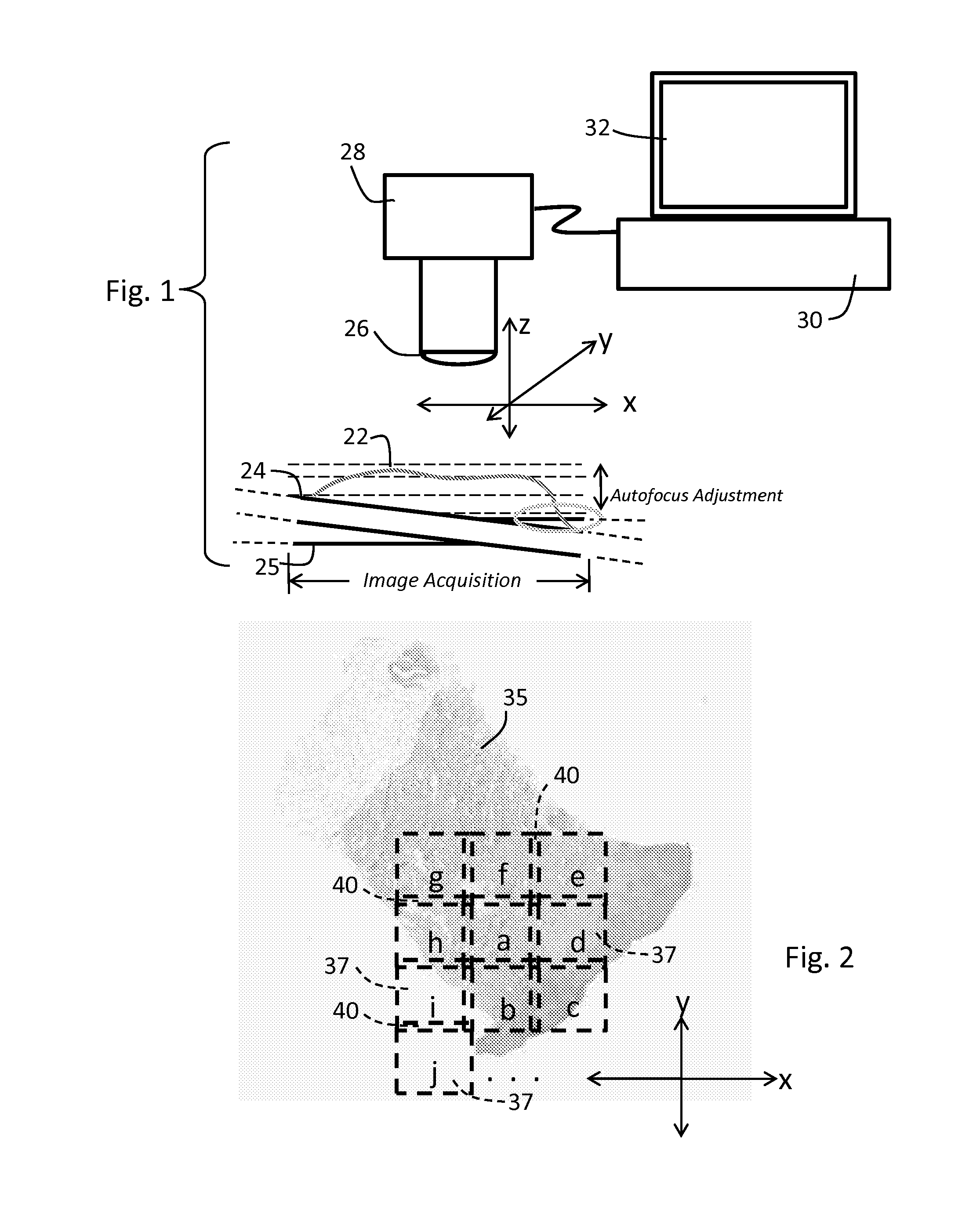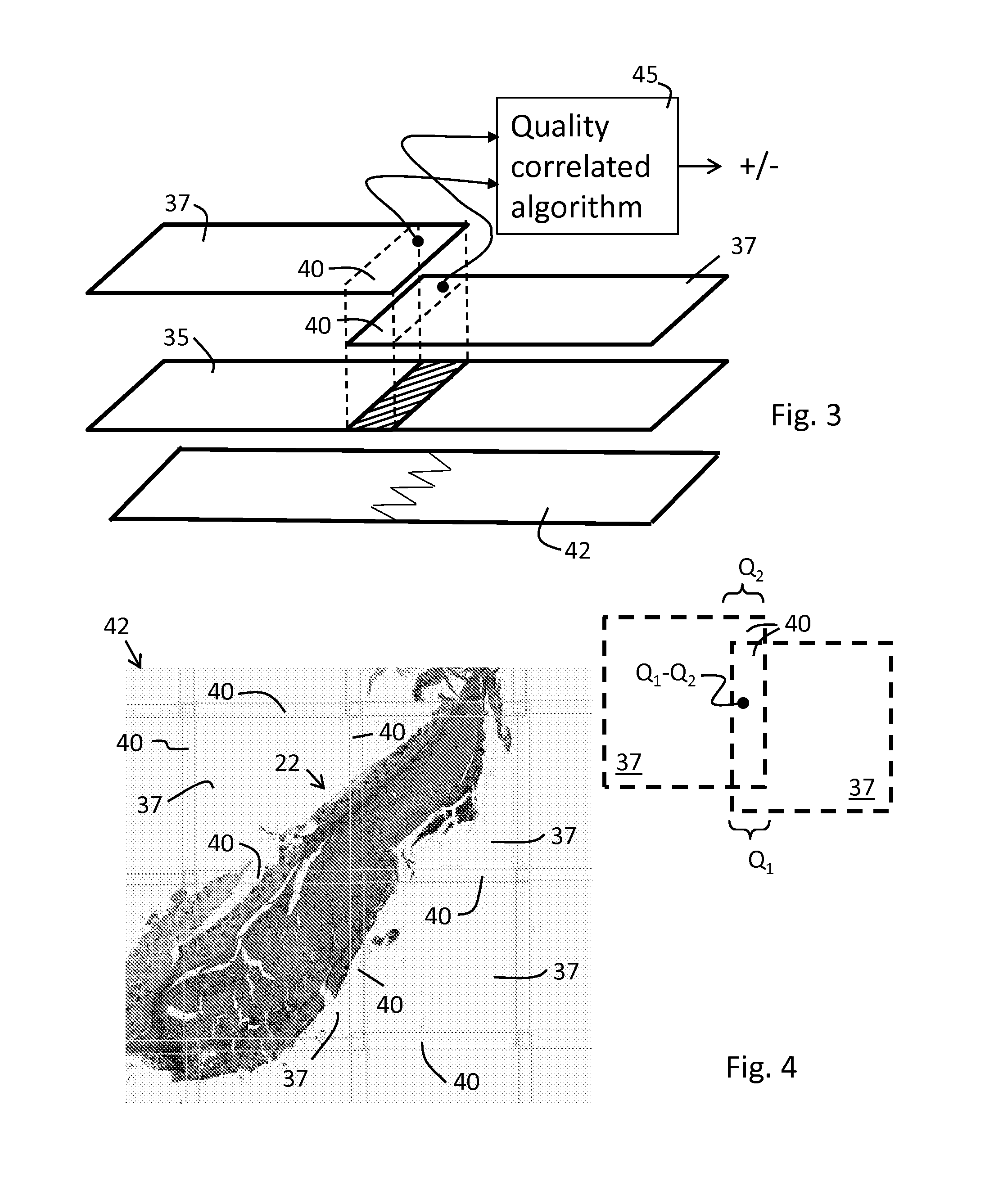Image quality assessment including comparison of overlapped margins
a technology of image quality and overlap, applied in the field of automatic quality grading, can solve the problems of different results, inability to meaningfully determine the quality of focus, etc., and achieve the effect of improving quality
- Summary
- Abstract
- Description
- Claims
- Application Information
AI Technical Summary
Benefits of technology
Problems solved by technology
Method used
Image
Examples
Embodiment Construction
[0080]According to the present disclosure, the quality of a digital image, especially the accuracy of focus for a microscopic pathology sample, is assessed comparatively for adjacent image acquisition segments such as tiles or strips, that overlap along a margin at which edges of the two image segments contain the same image content. Advantageously, this margin can be the overlapping edge at which the two segments are joined or stitched together by image processing techniques to provide a smooth transition. In an image that comprises adjacent segments to be joined or stitched together at such a margin, the overlapping parts of the image segments contain two separately acquired versions of the image content in the zone of overlap, each associated with its own image acquisition. The two images of the content in the overlapping margins may ultimately be averaged or interleaved to provide a smooth transition from one image segment to the next in a finished composite image, such as a mos...
PUM
 Login to View More
Login to View More Abstract
Description
Claims
Application Information
 Login to View More
Login to View More - R&D
- Intellectual Property
- Life Sciences
- Materials
- Tech Scout
- Unparalleled Data Quality
- Higher Quality Content
- 60% Fewer Hallucinations
Browse by: Latest US Patents, China's latest patents, Technical Efficacy Thesaurus, Application Domain, Technology Topic, Popular Technical Reports.
© 2025 PatSnap. All rights reserved.Legal|Privacy policy|Modern Slavery Act Transparency Statement|Sitemap|About US| Contact US: help@patsnap.com



